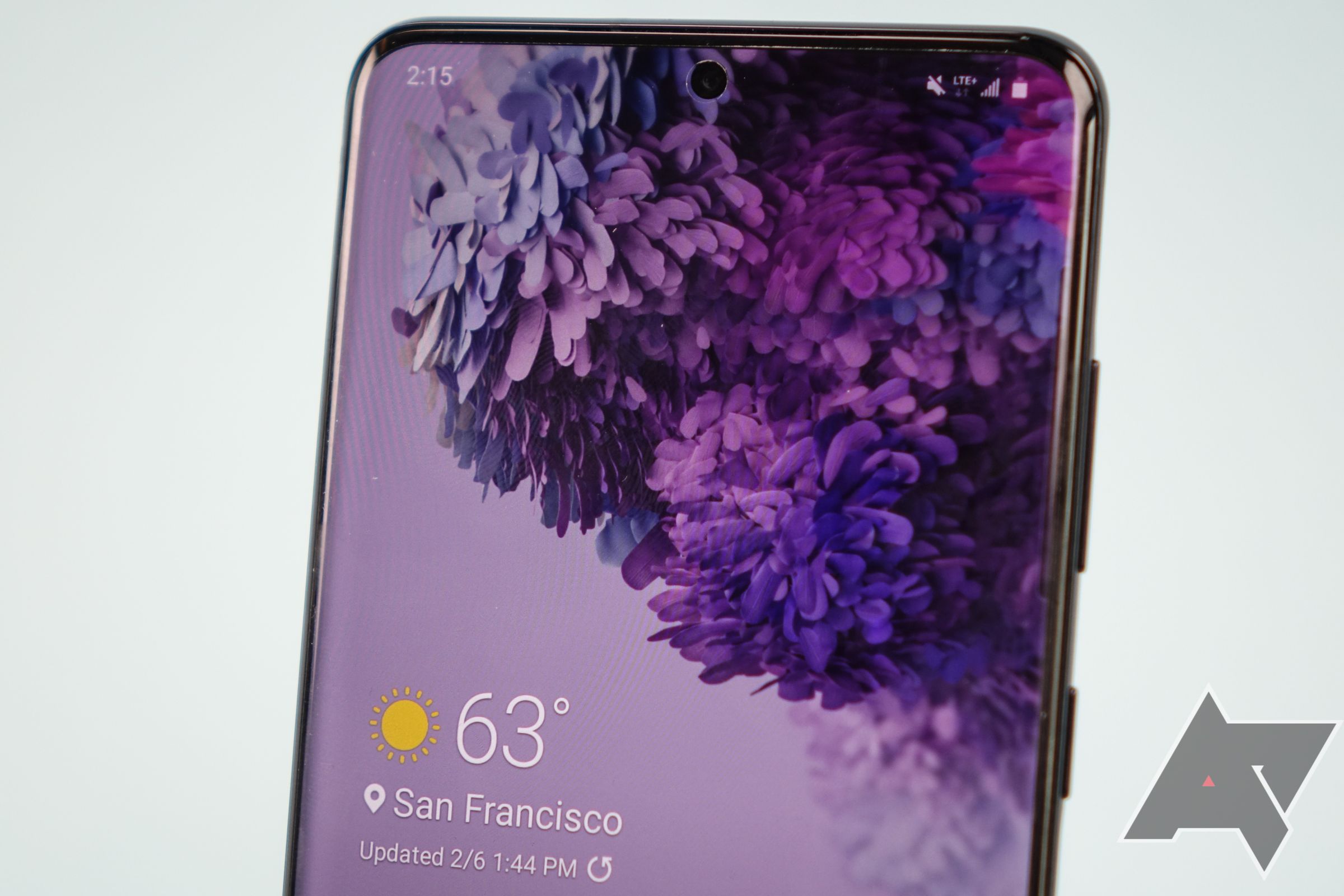It's unsurprising, given the leaks, but it's worth pointing out: Samsung again went with an in-display ultrasonic fingerprint sensor. For phones which start at $1,000 (and reach quite a bit higher), it's surprising that Samsung wouldn't try to compete with Apple and Google now that Android has good support for secure face unlock systems. We knock Google's hardware for a lot of things, but the company's face unlock on the Pixel 4 isn't one of them, and if anyone would try to ape Apple, we would assume it would be Samsung. And yet the Galaxy S20 phones are sticking with an in-display fingerprint reader.
Plenty of Android phones out there support their own face unlock systems, including OnePlus devices and prior Samsung phones, but it isn't the same as the systems devised by Apple and Google. Most Android phones just use the front-facing camera to compare what they see with a simple visual model they've built of your face, but they do it from a single perspective with no extra help from things like depth data. That makes them pretty insecure. The system on last year's Galaxy S10 could even be fooled by family members, in some cases.
Face unlock hardware on the Pixel 4.
Google's face unlock is a very different story. It uses data gathered from two different infrared cameras at opposite corners to generate a depth map, augmented with both a flood illuminator and a dot projector to gather as much detail as possible. And while Google does offer a disclaimer that it can still be fooled (and it doesn't check to see if your eyes are even open), it's miles more secure than single-camera based solutions. Apple's system operates off a single camera, but it's also pretty secure.
Fingerprint sensors might generally be accepted as a security mechanism, but Samsung's ultrasonic fingerprint sensors haven't proven to be the most secure out there. Last year a screen protector reportedly rendered the fingerprint sensor not just ineffective, but allowed anyone to get into your phone, which is utterly ridiculous. Paired with how insecure the S10's face recognition tech was, it's surprising that Samsung didn't consider a new solution for its next flagships.
If we're honest, Samsung's also known for duplicating features from Apple (see Animoji, Samsung Pay, killing the headphone jack, even straight ripping icons in presentations), so why not take the opportunity to riff on one of Apple's best features?
Recent flagships are pushing secure face unlock systems, why not Samsung?
There are some potential explanations. What the in-display fingerprint solution loses in security, it makes up for in elegance of design. With it, you can embed the necessary hardware below the screen itself, making for one svelte device, and touching your display to unlock it is pretty futuristic — if you can hit the tiny spot that it uses on the first try, anyway. Sticking with it also means you don't need to add a notch or big bezel, which has so far been required for every genuinely secure face unlock system. Samsung fans might accept display cutouts for front-facing cameras, but they'd probably freak if they had to return to S8 or S9-era bezels or an iPhone-style notch. Lastly, an in-display solution is also probably cheaper, and margins matter more than ever with smartphone shipments in flagship markets like the US declining.
Whatever the reason, Samsung has decided to stick with an ultrasonic, in-display fingerprint unlock system for the Galaxy S20 series, and given the competition and how expensive these new phones are, we think that's a little bit silly.

